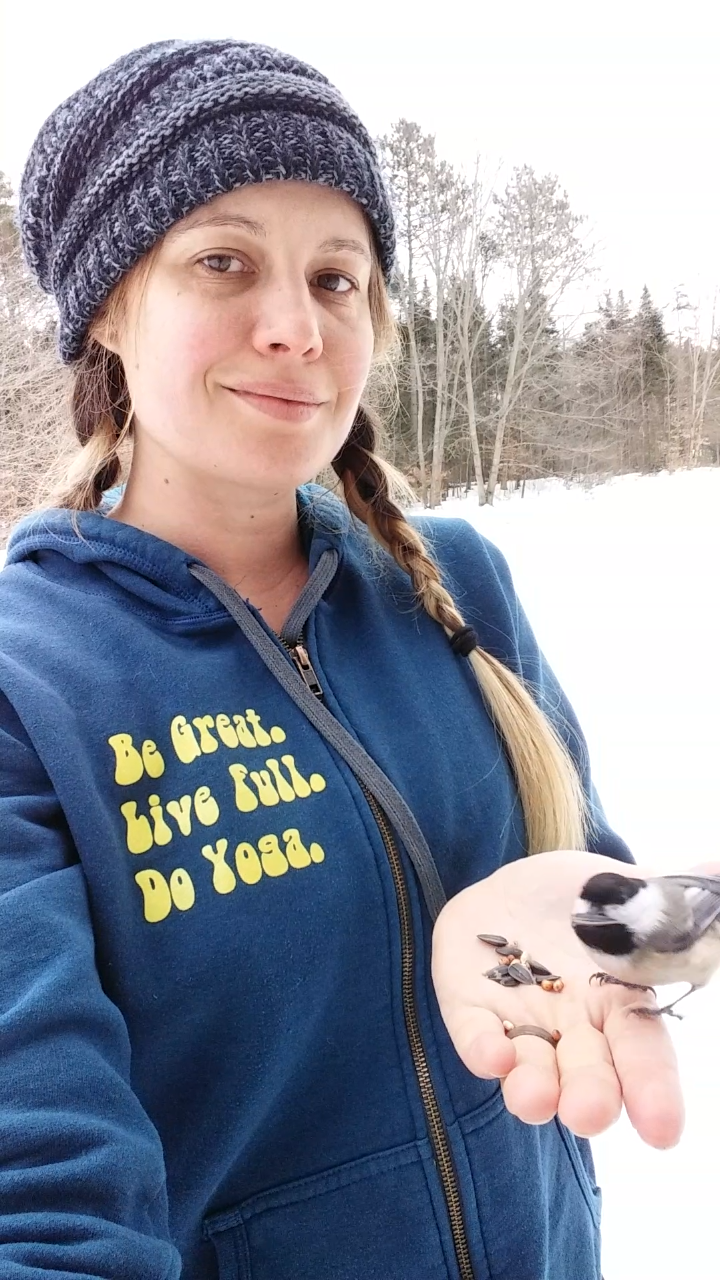Stretching Your Awareness:
Parallels in the Practice of Yoga and the Practice of “Sit Spot”
–By Anika Klem
Like so many people, yoga has become a grounding force in my life. It’s a time where I cultivate awareness of the present moment and develop, at least for a moment, a quieter mind. It’s not the only reason I get on my mat: I’m psyched about my newfound flexibility, the incredible yoga community that I call my friends, and in general I just feel happier and healthier since committing to the practice.
However, it’s that subtle awareness component that has inspired me to write this blog post. Chances are, if you’re reading this you can already relate to that experience of focusing on your breath while flowing through a sequence of asana. You’ve felt how it tends to calm the nervous system. You’ve observed how this practice helps you stay more patient and relaxed throughout your day. You’ve become more in tune with your self.
I’d like to share with you another practice that, for me, has complimented my yoga practice, especially that intention of (and appreciation for) being in the present moment. It’s a way of cultivating this quality of attention outside of the studio, and one that is approachable for anyone. This practice is called “Sit Spot”.
“Sit Spot” is the practice of routinely visiting a designated natural area for periods of quiet observation. You literally pick a spot outside, sit, and watch. By visiting the same place over and over again, a strong relationship to the land is developed. You get to know the place in different times of day, seasons, and from a variety of states of mind. Inevitably, natural patterns start to emerge. A solid sit-spot routine can be a profound learning experience.
“Sit Spot” is one of the core routines in many wilderness schools today, developed by Jon Young, Tom Brown, and their Mentors. However, the practice is as old as humanity. Just as we’ll never be able to name the first yogi, we’ll never be able to name the first person to have a sit spot.
Admittedly, I ebb and flow out of my sit spot practice. I wish I was more diligent, but it’s hard with busy schedules and dark, freezing cold winters. However, this past spring I was pretty motivated. From around April through June, most days I would spend about 20 minutes sitting on the edge of North Montpelier Pond. Often I would go with a friend, but we would sit in quiet companionship with the same goal of sit-spot in mind. (It’s worth noting that this practice can be accomplished, even enhanced with a friend, as the idea of spending this time alone can be daunting to some.)
I went to my sit spot often enough that I could begin to predict what would happen. Around 6:45 a parade of common mergansers (a type of duck) would make their way north to south across the lake. By 7am a Merlin (a small species of falcon) would start to call out from a white pine tree across the street, terrorizing the forest. Two Kingfishers would make their way circling the entire pond, and I knew which tree they would stop and rest on. It would be the same tree almost every day. I tracked the otters, and eventually this led me to hang out with them by their den for long periods of time as they ate fish on the ice shelf and watched me with as much curiosity as I watched them.
Paul Rezendez, in his book “Tracking and the Art of Seeing” writes: “In nature, we are open to a larger perspective of self.” I take this to mean that when we spend significant time outdoors we begin to realize that we are not separate from nature, but one in the same. Nature is the ultimate yogi: It has no ego, no attachment, is perfectly balanced, and one with the universe. Does this mean we can be, too?


